Insights
Sight: The Importance of Lighting and Colour in Office Design
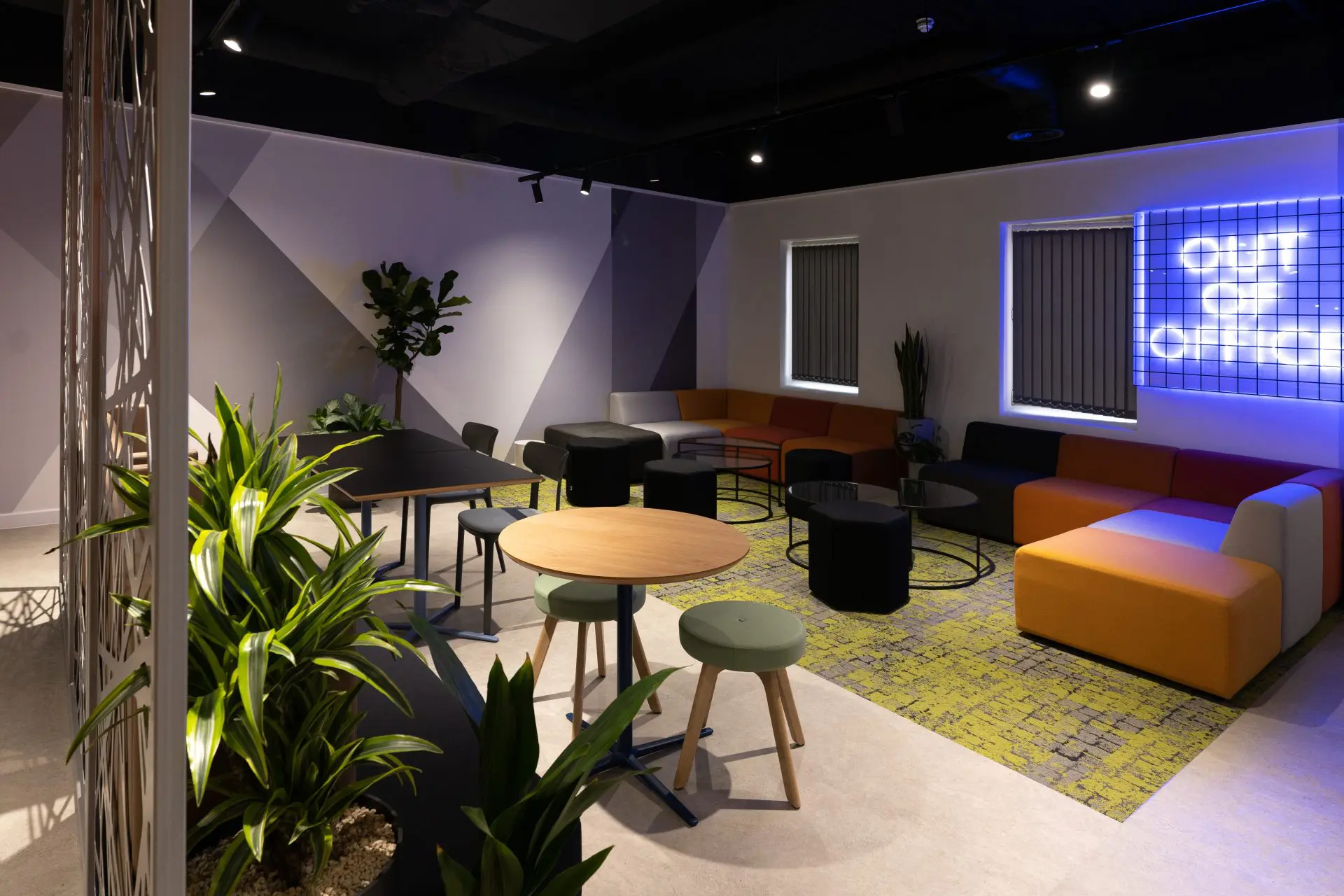
Lighting and colour are two of the most important elements to consider when designing an office. They can have a significant impact on employee productivity, mood, and overall well-being. When beginning any project here at Spacio, we will always investigate how available natural light factors into the space and how it can be leveraged and balanced with warm or cold artificial lighting to enhance the atmosphere.
The Connection Between Lighting and Performance
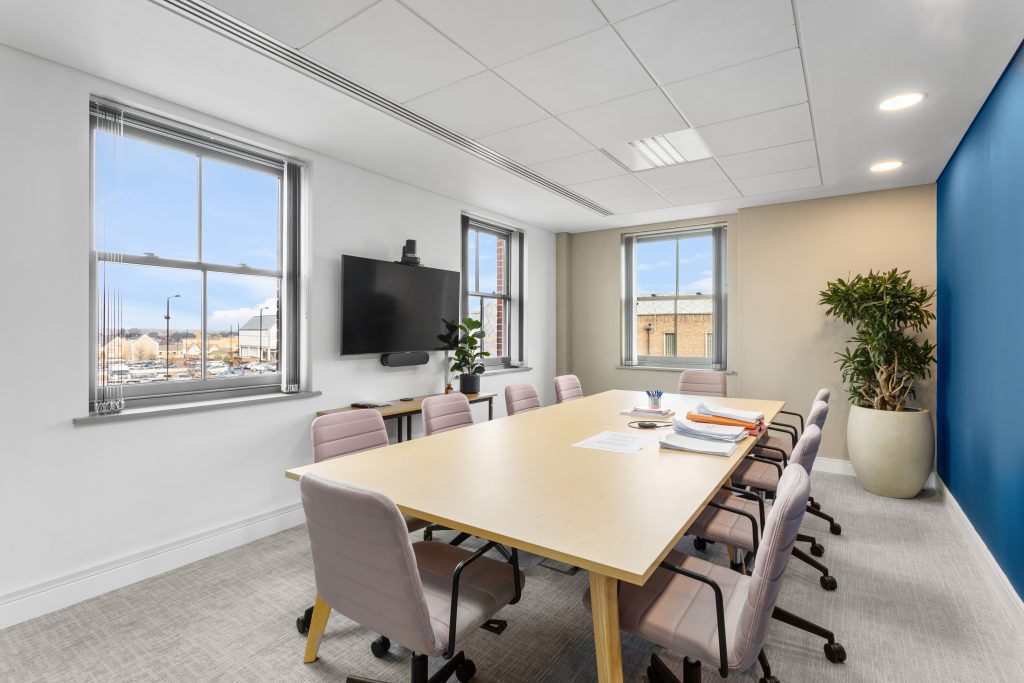
Lighting can often be overlooked and pushed aside for elements such as ergonomic furniture and sleek aesthetics. However, there are arguments to suggest that lighting holds far more importance on overall employee productivity and efficiency than anything else. Studies show that a healthy exposure to natural light provides our bodies with a healthy circadian rhythm, in turn improving cognitive function. Carefully placed artificial light can simulate natural light and have remarkably similar effects on the mind and body.
Tailoring Lighting to Different Types of Work
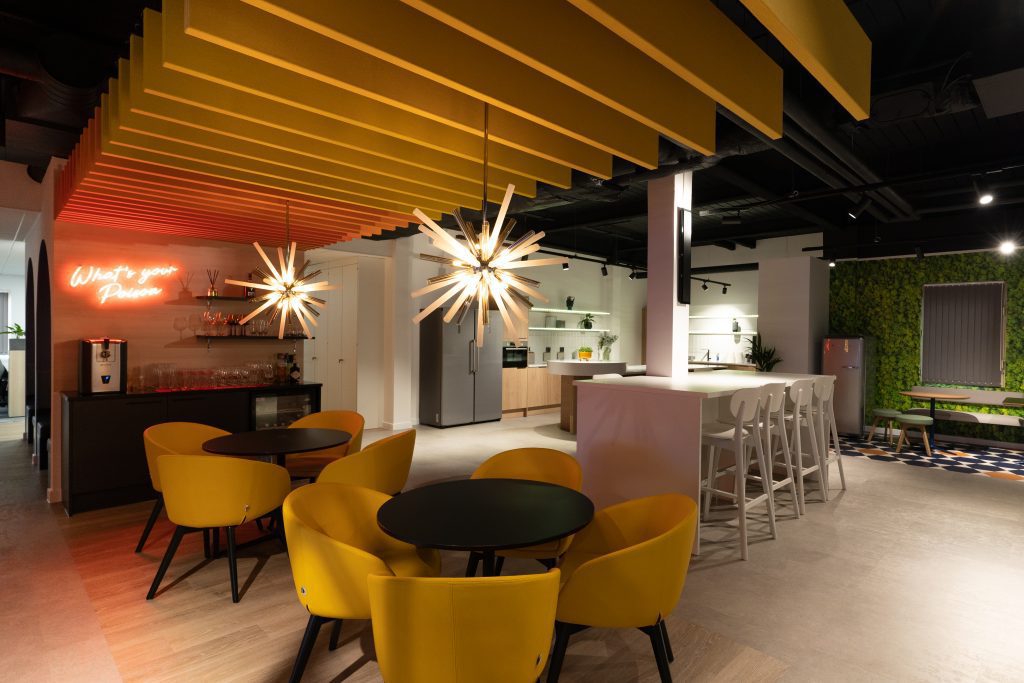
Not only can you utilise lighting to improve overall productivity and performance, but you can also home in on distinct types of work and use lighting to improve them.
The biggest way to achieve different effects is by utilising bright lighting in solo workstations to improve concentration and efficiency versus dimmed lighting, which can be used in collaborative and team areas to help improve creativity or relaxation.
The same effects can also be achieved by utilising warm and cold lighting. Warm lighting leans itself to bringing out creativity in employees. The warm lighting promotes feelings of quiet seclusion and allows employees to take bigger creative risks as they feel unseen. On the contrary, whiter colder lighting lends itself to enhancing focus and hard work.
By weaving lighting approaches into areas of an office, you can have a well-balanced environment where all types of work can be achieved to their full potential. Choose to make lighting adaptable in each environment and perhaps even go so far as to allow each person to choose their personal lighting at desks.
Beyond lighting: Effects on employee well being
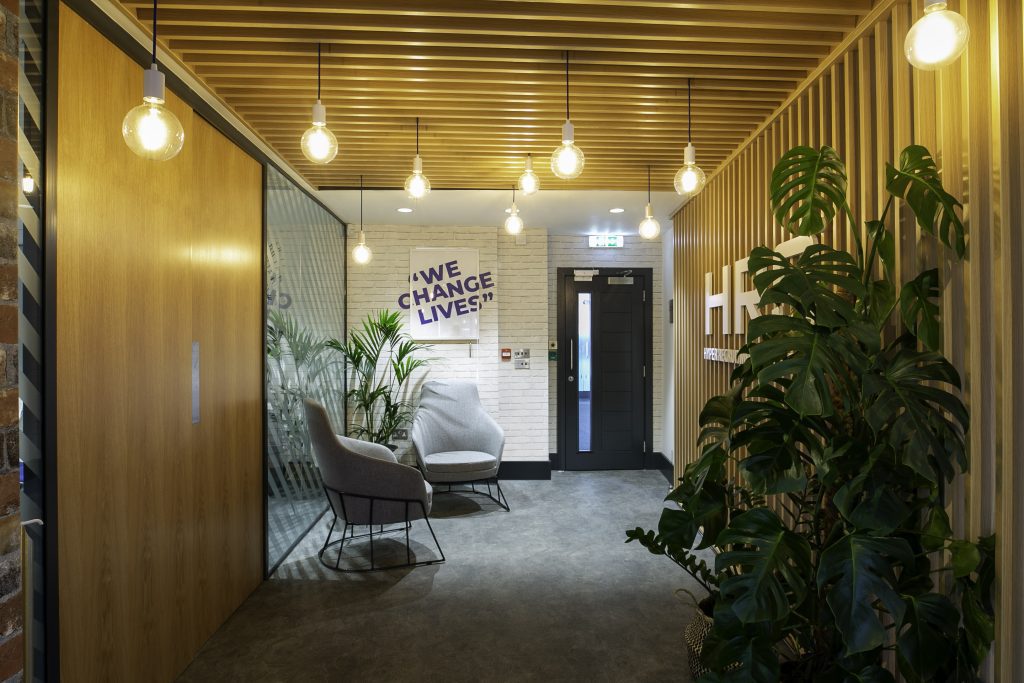
Lighting can often affect much more than just work output and efficiency. It radiates into employee wellbeing. A workplace utilising the correct lighting can affect mood and emotions, contributing to stress reduction and overall employee health. Consider the effect of warm lighting to break up fast paced moments in a dynamic office environment where harsh light would typically be glaring overhead. It is important to recognise the power of lighting as an emotional steady point in a workforce.
Designing the Future: Sustainable Lighting
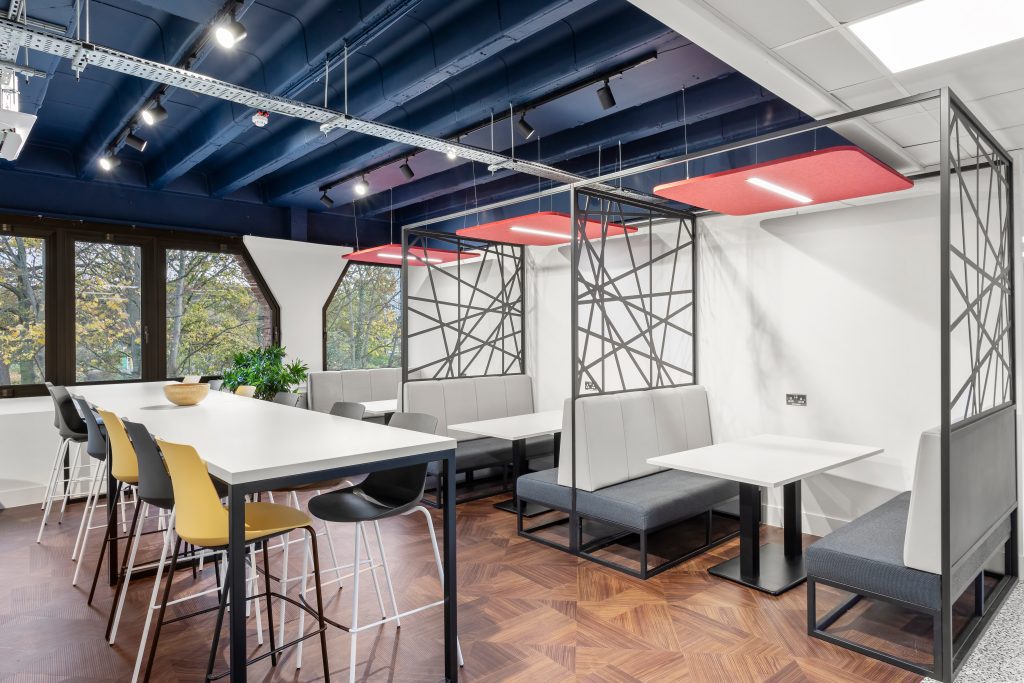
Energy prices are on the rise and the future of the planet is often called into question, and companies are put at the forefront of the discussion. It is important for companies to cut the cost of their energy prices, whilst simultaneously using only energy that is needed to protect our planet and lower the impact of their usage. By embracing energy-efficient lighting solutions, these two qualms can be answered.
By Infusing space with purposeful lighting, the very narrative of an office space can shift. Increasing productivity, improving comfort and efficiency within each industry, and even boosting the health of our employees and our planet. Lighting therefore should be treated as the backbone of any interior office project and great care should go into each decision.
Colour Theory
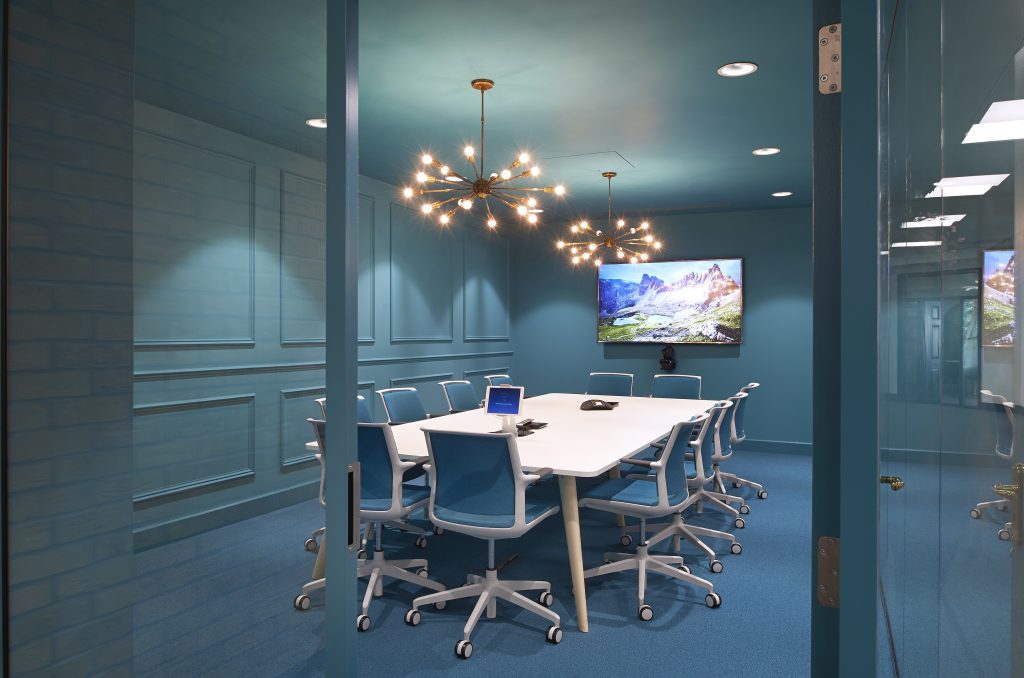
The visuals of the office can also come down to simpler elements like the colours that have been used. Despite it seeming like an easy choice when choosing the colours. There is a great deal of meaning behind each colour and how they can affect employees.
The primary focus of the colours that are used should be related strongly to the brand. Your office is an extension of the brand and a powerful marketing tool. Just as your brand collateral or your website should strongly represent your brand identity and personality your office space can too.
But the tactical application of the office colour scheme is often where challenges arise… especially if your brand colours are quite bold. A general rule of thumb is…
Blue
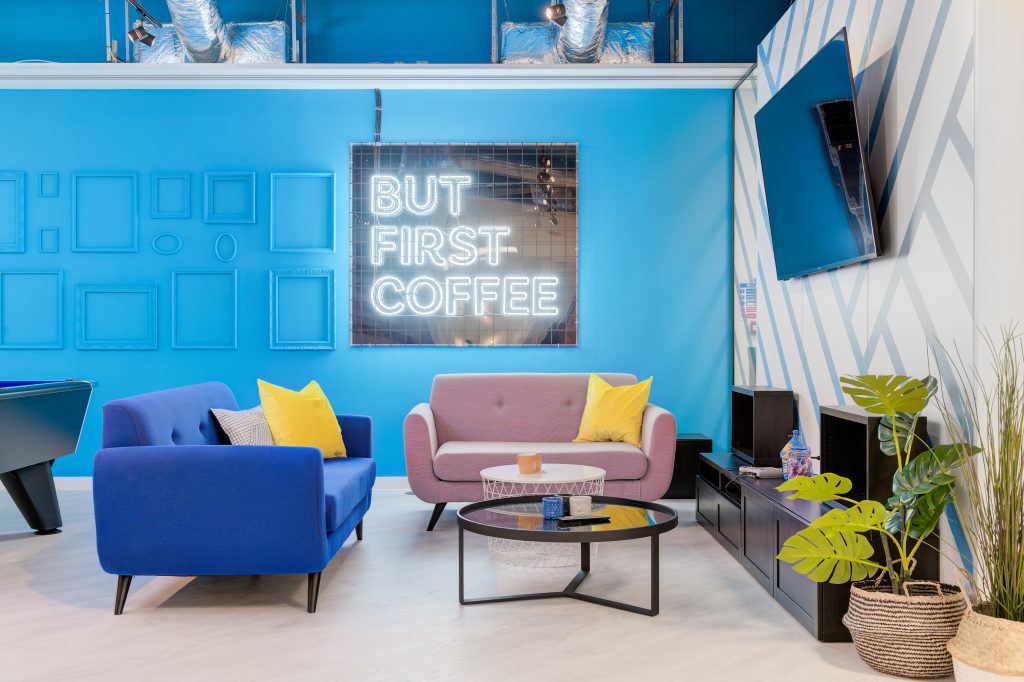
Blue can be a great choice to accentuate in an office space. Blue is a cool colour that is associated with calmness, trust, and professionalism. It can also help to improve concentration and productivity. In addition to these benefits, blue is also a versatile colour that can be used in a variety of ways in the office. It can be used as the primary colour for the walls, furniture, and accessories, or it can be used as an accent colour to add a touch of freshness and sophistication to the space.
Green
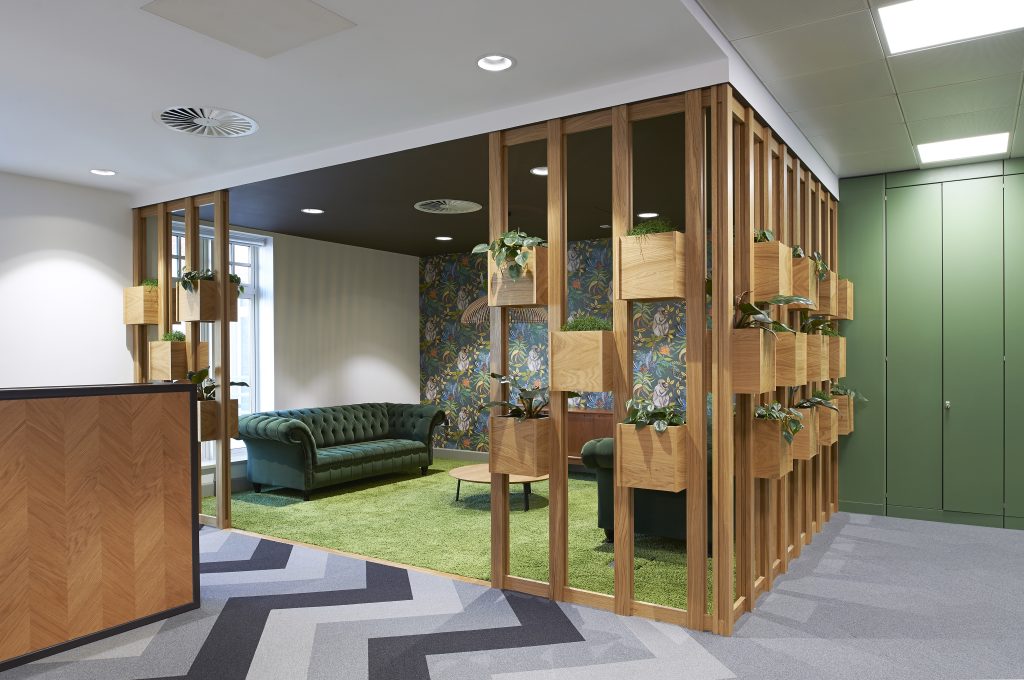
Utilising Green can be particularly effective in workspaces where wellbeing is at the forefront of importance. It has been said that green can help employees feel more connected to their surroundings and can ensure mental and physical health is at its peak. The green colour can be achieved with a frugal incorporation of plants in the workspace.
Yellow
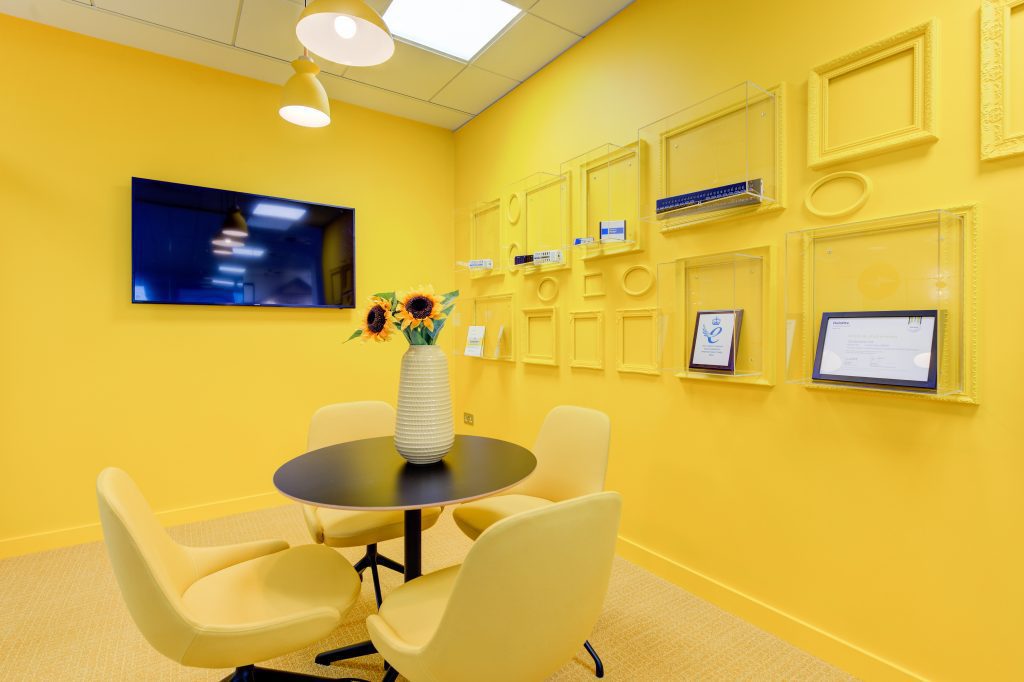
Yellow is a colour that is known to stimulate mental activity and positivity. It is an ideal choice of colour for areas where collaboration and brainstorming take place like meeting rooms. Yellow is an extremely prominent colour and as such can lead to overstimulating, so it is important to not use yellow over the entire office.
Red
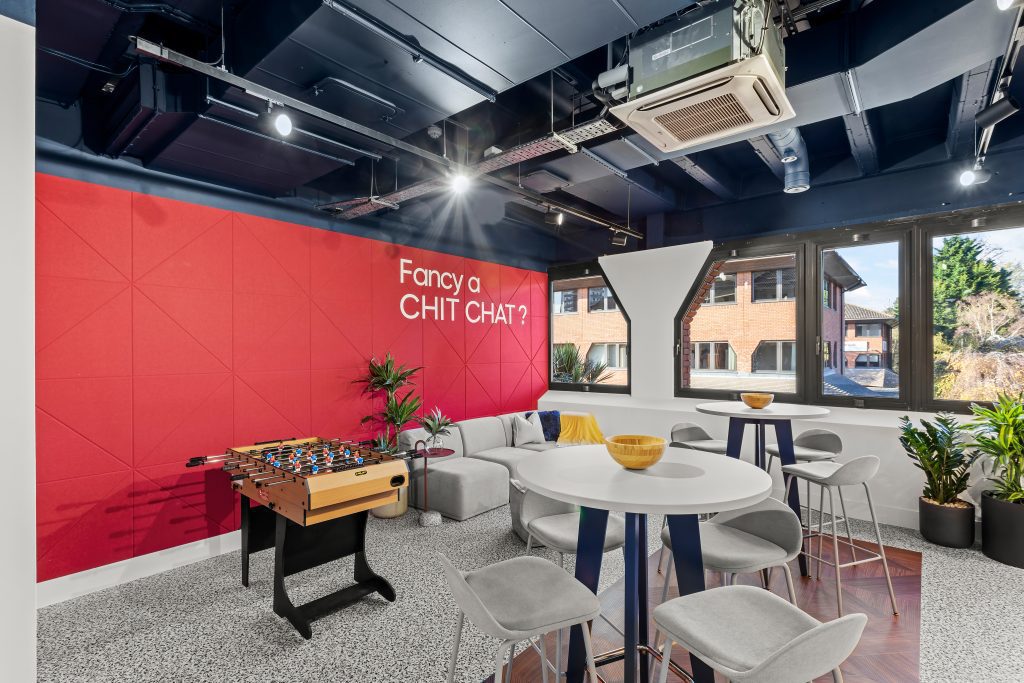
Red is the trickiest colour to master. It should be used very sparingly. Red can cause a lot of aggression but used in the right contact and weight it can boost energy levels of all in a room. It is best used as a complementary secondary colour to achieve the desired results.
Neutral Colours
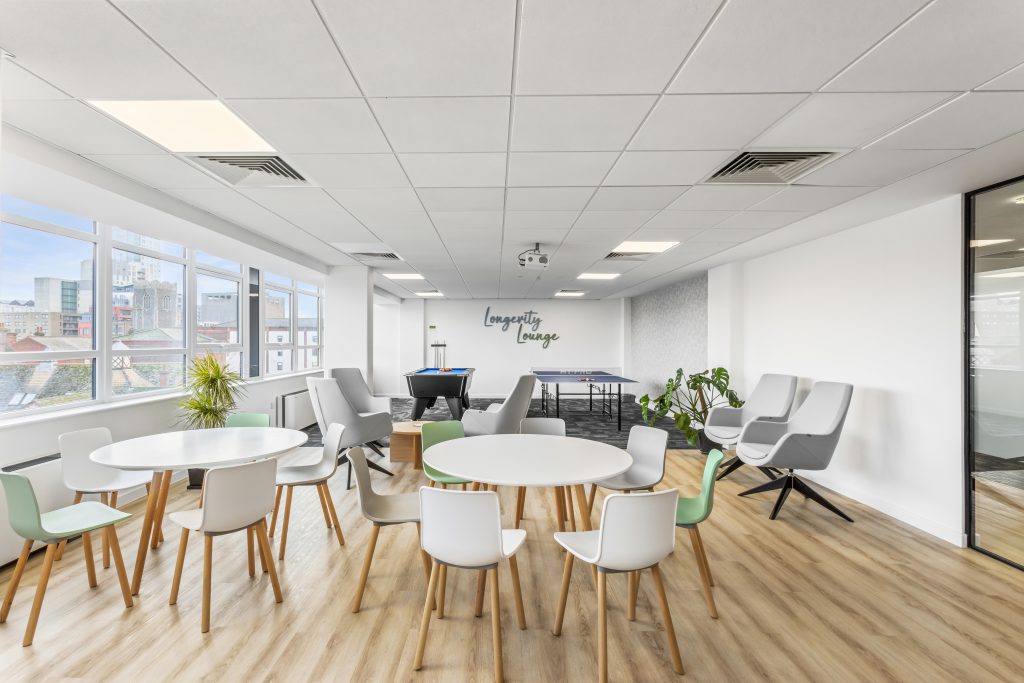
Neutral colours in office design are immensely powerful and can work well in carious office setting, the neutral colours can often bring a balance between these original colours, Neutral tones exude professionalism and can be used without too much restriction. However, it is important to note that they can reduce the lack of stimulation in an office place and give off an overall corporate tone,
Conclusion
By understanding the psychological effects of assorted colours. Companies can decide on how best to apply their own brand palette. They could even use the psychological effects of colours to establish a new brand palette based on how they would like staff and consumers to feel alike.
If you are looking to transform or refresh your working environment into a space for you to do your best work, then reach out to our team of designers and space planners us today!
Got a project in mind?
Let’s create a plan to achieve your objectives.
Contact us today to learn more about our workplace design, space planning, office fit out services and how we can help you to unlock your office’s full potential.
Let’s create the space to do your best work.